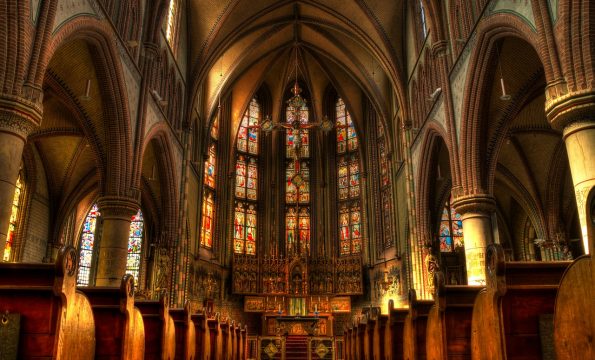Many members of the Catholic Church thought the sexual abuse crisis was mostly in the past. This certainly has been the Church’s intent, at least in word. But it is again in the spotlight in the Pennsylvania grand jury report. The report of 70 years of abuse in the Church in six dioceses in Pennsylvania found of 300 priests had sexually abused more than 1,000 known victims.
“In addition to scandals involving the former Cardinal Archbishop of Washington, D.C., in the U.K., Australia, Peru and Chile, and on the verge of papal visit to Ireland, which suffered some of the worst of the worldwide priestly abuse. The head of the United Sates’ bishops conference has appealed to the Vatican for external assistance in conducting a blanket investigation into the continued blight of the clerical abuse crisis across the U.S.
“‘We already know that one root cause is the failure of episcopal leadership,’ Cardinal Daniel DiNardo stated. ‘The result was that scores of beloved children of God were abandoned to face an abuse of power alone. This is a moral catastrophe.’ While DiNardo is right about the catastrophe, his solution does not go far enough.
Priests violated especially young alter-boys and shared them with other priests. When a victim complained of the abuse, Church officials dismissed accusations, accused the victim of making it up, humiliating him, or making him feel guilty for exposing the perpetrator.
The Pennsylvania report, which relied mainly on internal church documents, is the “largest investigation of its kind. But it isn’t large enough. The report plainly presents evidence that the Church’s deliberate cover-up frequently resulted in expiration of the statutory limitations period… and that law enforcement was overly deferential to the Church… The grand jury describes how dioceses had a ‘common playbook’ by which they ‘managed’ the crisis. This enabled them to escape ‘public accountability.’ The whole system was organized with a supreme lack of transparency, accountability and especially justice.
“The national [Catholic] Church has become adept at offering shallow and hollow apologies, statements about shock, disgust and pledging promises. Dioceses are releasing statements emphasizing these crimes concern the past and not the present, stating there are policies in place for a safe future… These pious platitudes do not create transparency or promote trust.” The report suggests that Church officials have not told the unvarnished truth. They have not admitted to the wrongdoing, but have minimized it, justified it and made excuses for it.
“As the report confirms, the current system [of choosing bishops] relies on cronyism and what could be called a kind of nepotism: the bishops reproduce themselves, and thus no new blood enters the system.”
Pope Francis, early in his pontificate, established a zero tolerance policy and a commission to address the crisis and develop solutions. But the commission met roadblocks from within the Vatican itself. Its own recommendations were not being implemented, and communications by victims to leading Vatican departments were being ignored. It was denied vital resources to carry out its work. Irishwoman Marie Collins, a prominent survivor and member of the commission eventually resigned in protest. All of this happened before Peru and Chile and the latest U.S. revelations.
“Guidelines on the very issue of abuse issued by Rome in 2001, 1962 and 1922 demanded secrecy as a matter of course. It was policy to keep the activities of abuser priests and members of religious orders from coming to light in the public domain. That policy was central to an institutional culture of putting the institution’s reputation above the welfare of its members and the victims of its ministers. That culture still lingers within too many bishops worldwide and even amongst some Vatican officials.”
The Pennsylvania grand jury report is limited to six local dioceses in Pennsylvania. It was so bad there that it raises questions about the rest of the country, and indeed, since there have been so many revelations of abuse all over the world, whether or not there should be grand juries or there equivalent everywhere. If the Vatican’s own papal commission on these issues has floundered amidst resignations, then there is still, clearly a deep-seated malignant institutional culture at the church’s core, of which the abuse crisis is but sadly an acute symptom. In other words, what other crimes are still hidden?
“This is not simply a series of individual moral failings. It is a crisis of moral corrosion and corruption embedded into the church. Values and virtues have become suppressed — even by those who teach and promote them. For instance, earlier this year, the U.S. bishops yet again resisted calls for greater episcopal accountability, a resistance witnessed all too prevalently throughout the church elsewhere…”
Pope Francis’ solidarity with the victims in his August 20 letter is welcome by many, but what really needs to happen is for the church to completely dismantle the church’s centralized hierarchical system of governance and replace it with something open and accountable.
If God’s true people are not willing to expose Rome’s sins, God will give the task of revealing them to the “stones,” i.e. the media, grand juries, royal commissions, and other secular bodies. These stones will then prepare the way for the loud cry of the angel that lightens the earth with his glory.
“And I heard another voice from heaven, saying, Come out of her, my people, that ye be not partakers of her sins, and that ye receive not of her plagues. For her sins have reached unto heaven, and God hath remembered her iniquities. Revelation 18:4 and 5.






Comments
ron
Thursday September 13th, 2018 at 10:23 AMThe RCC is just an extension of Babylon just like all who operate under the Talmudic principles.
reading the jesuit oath tells it all !